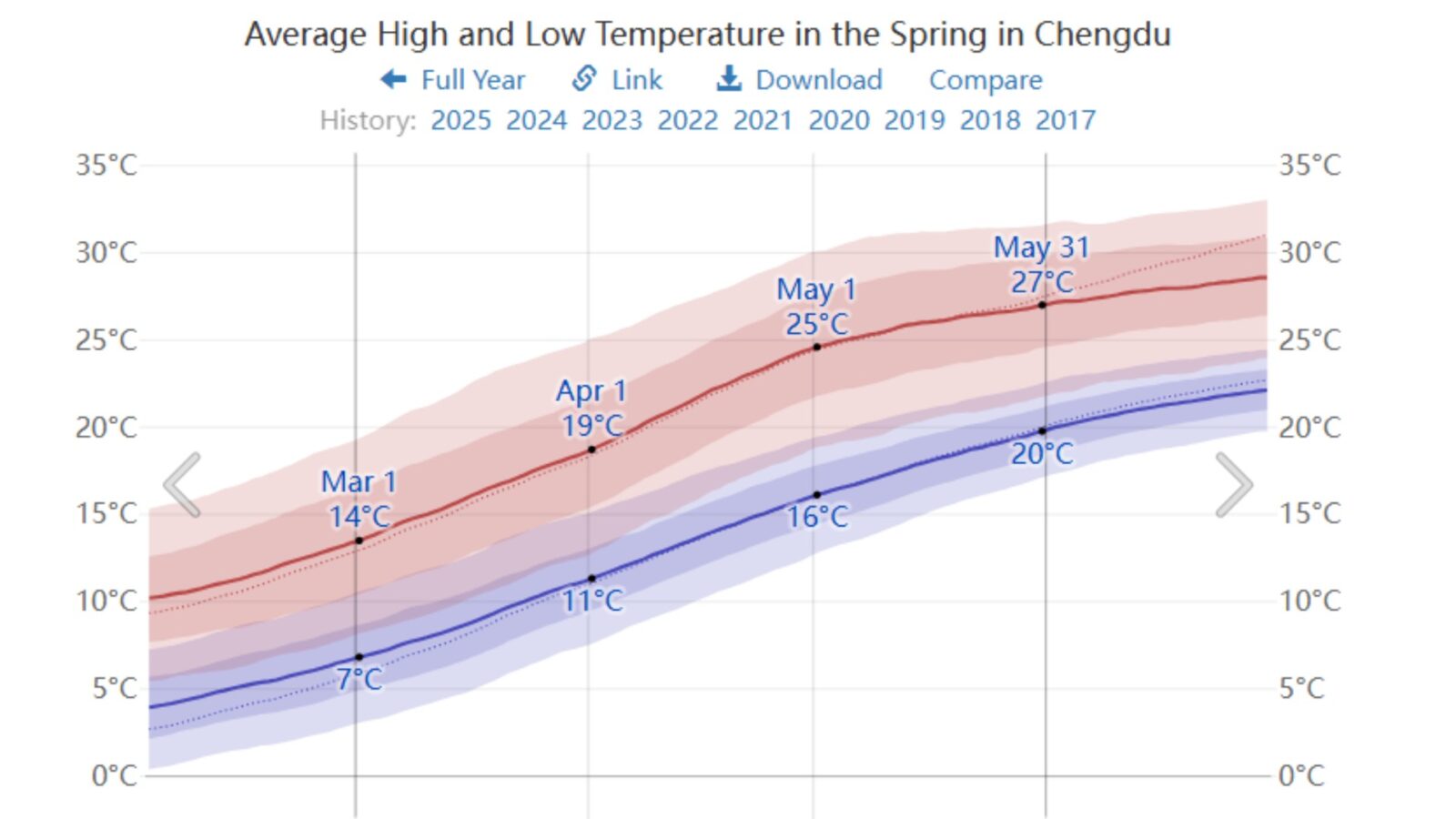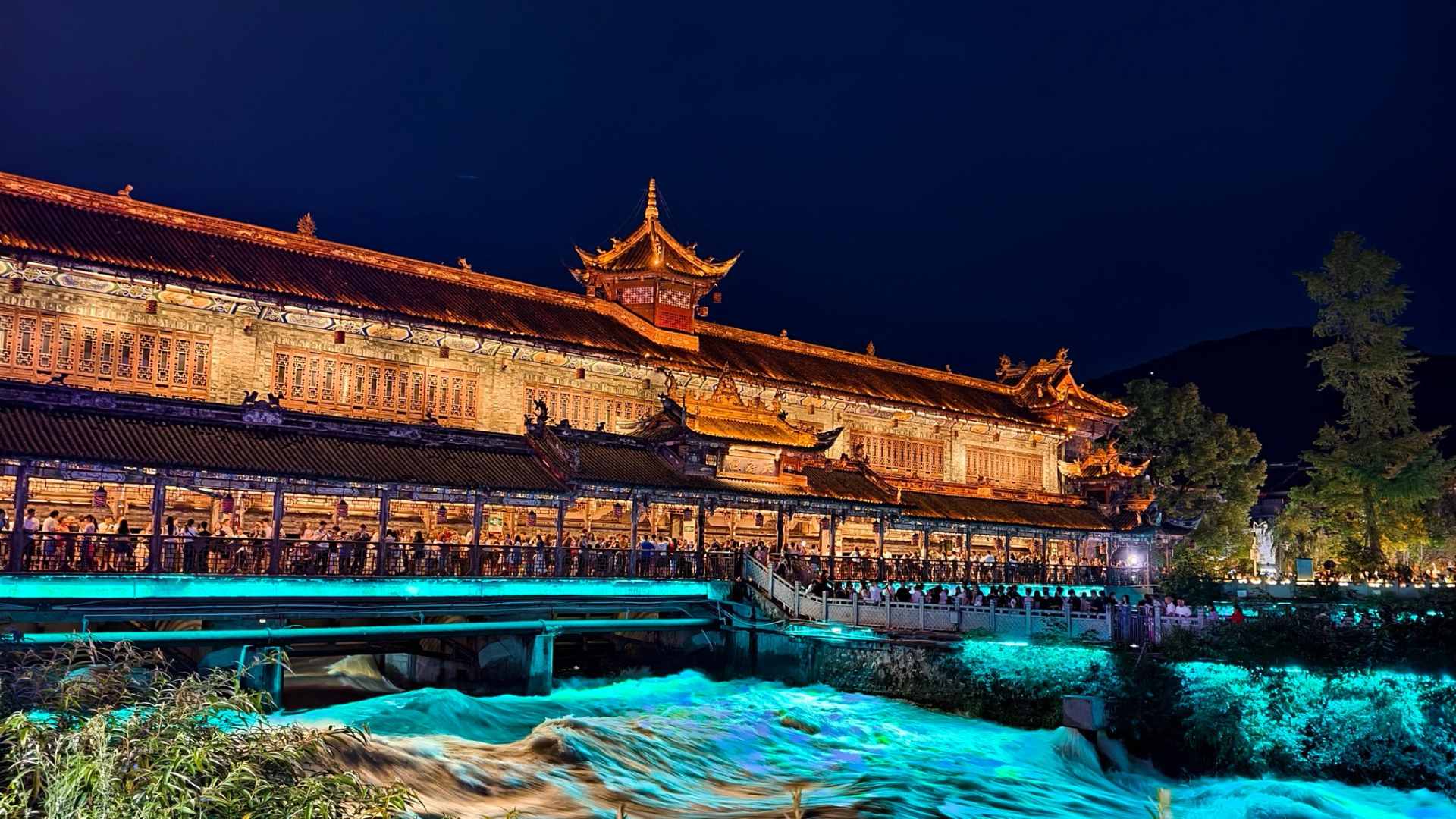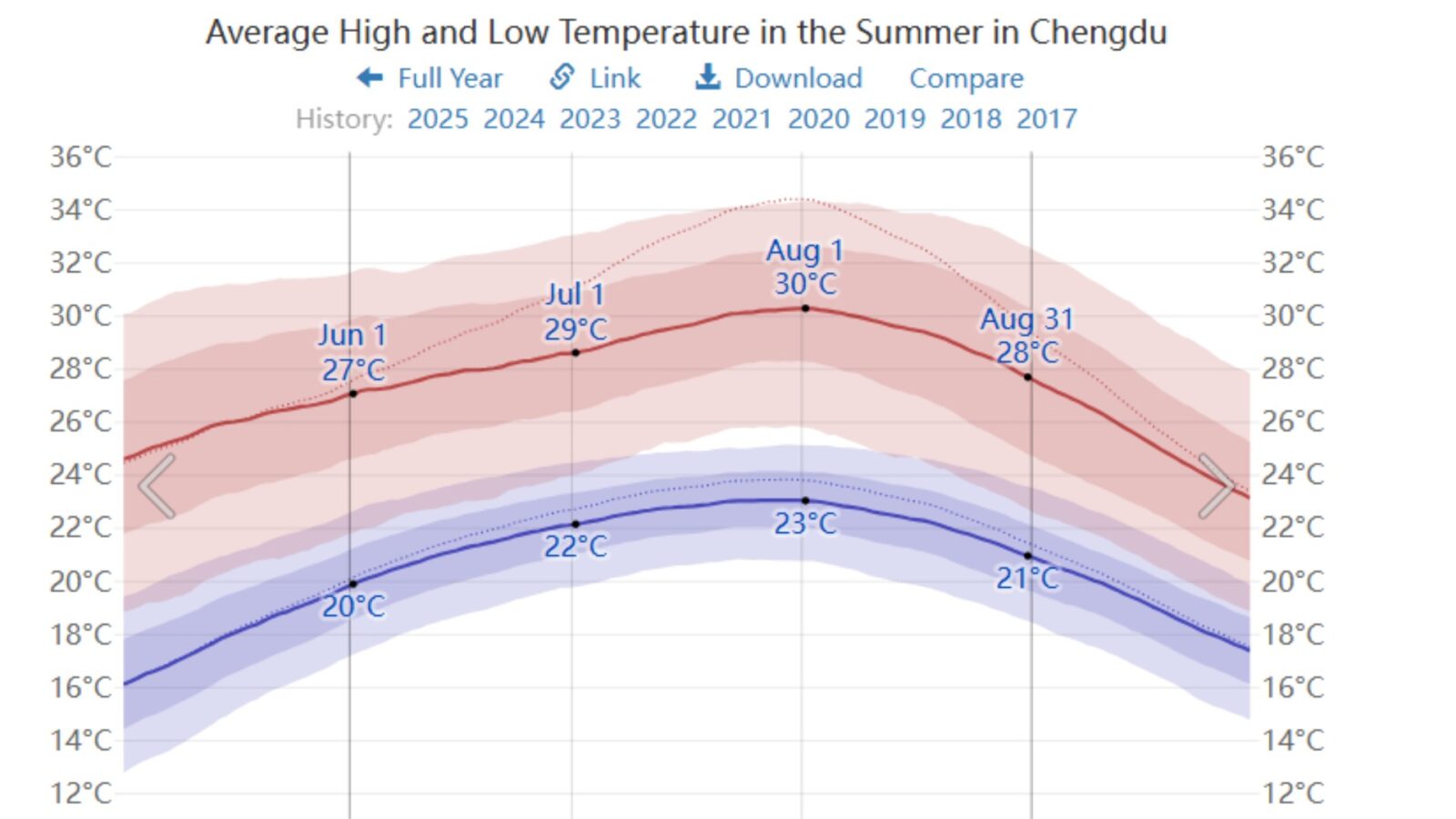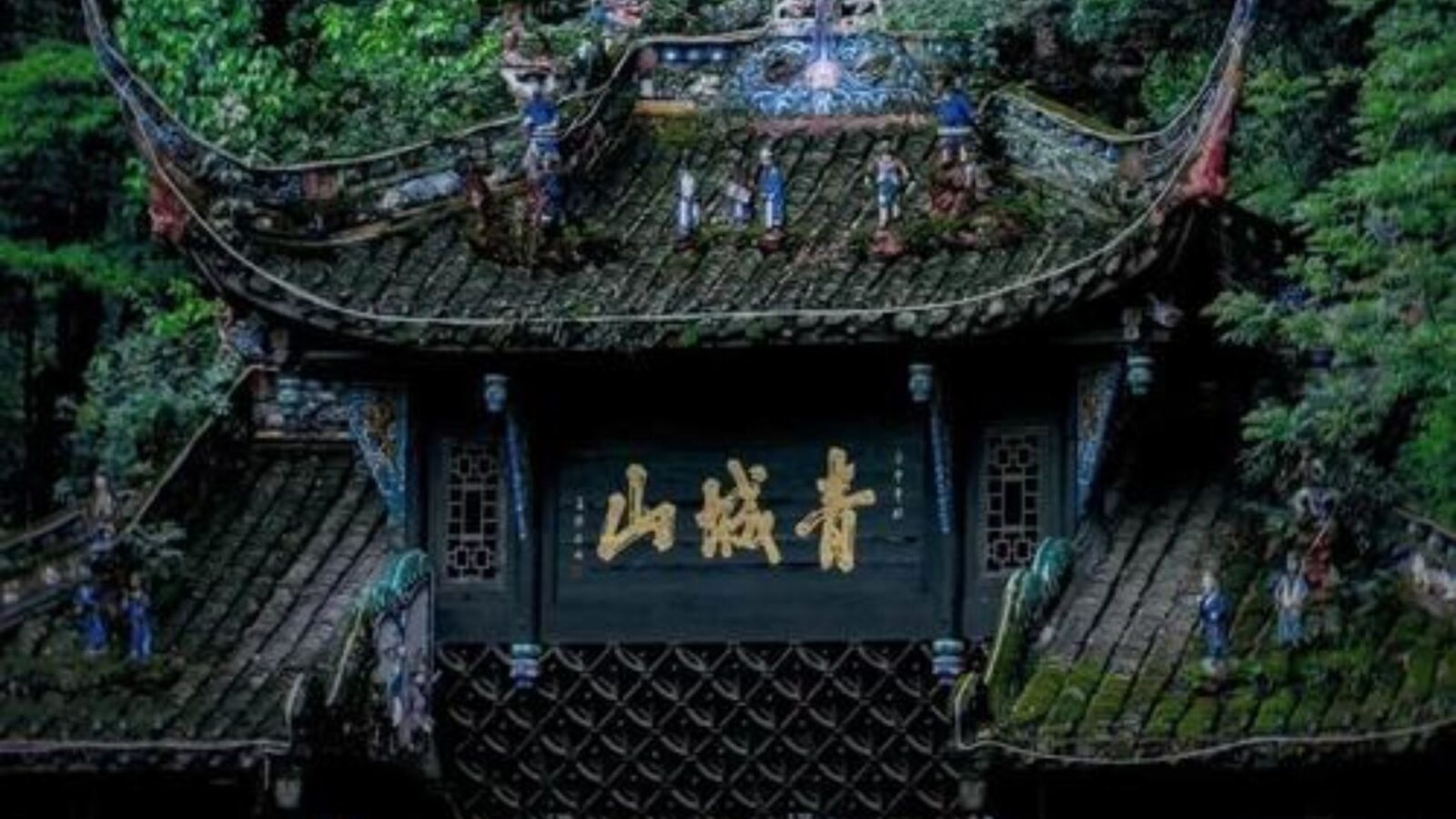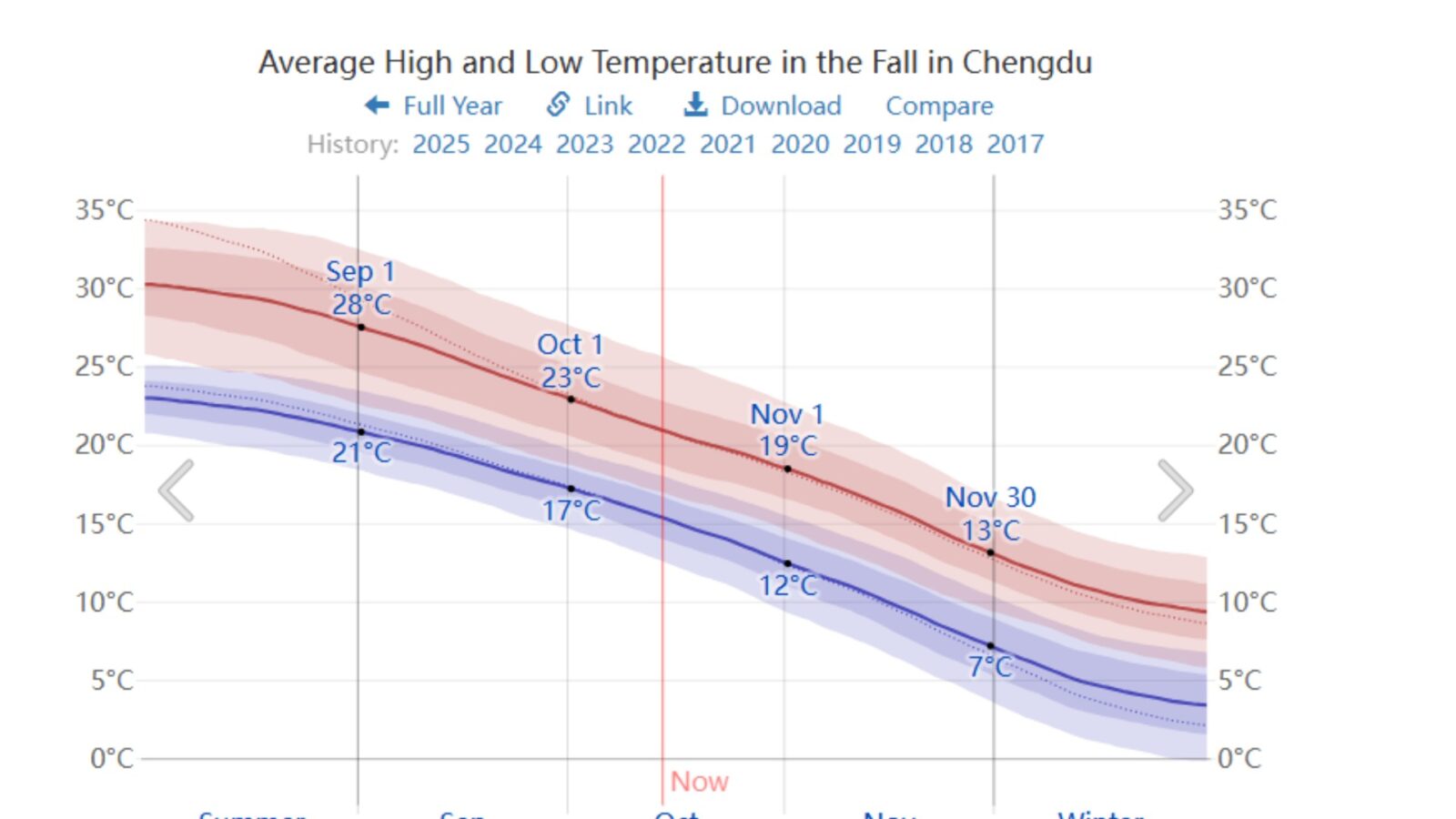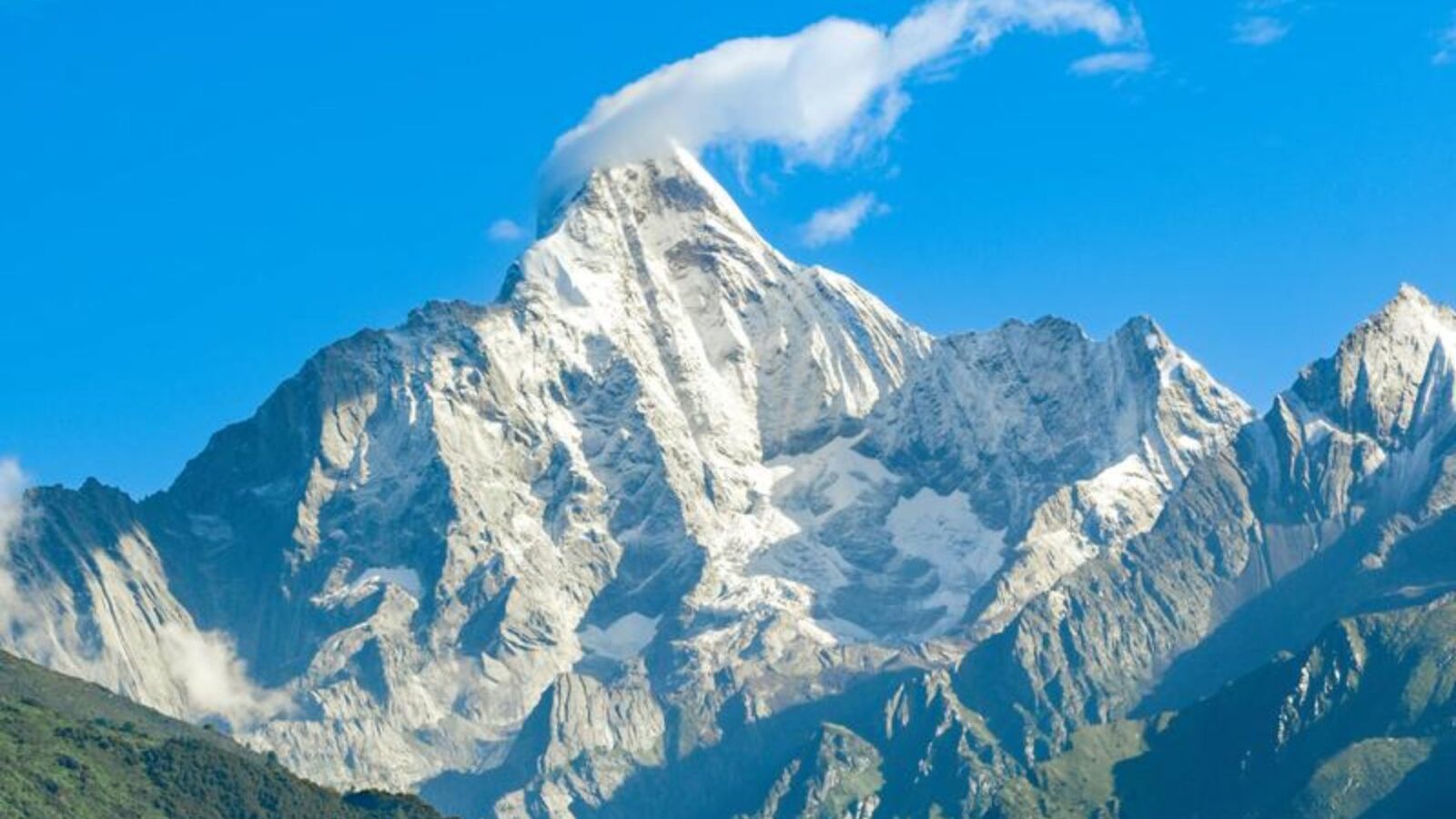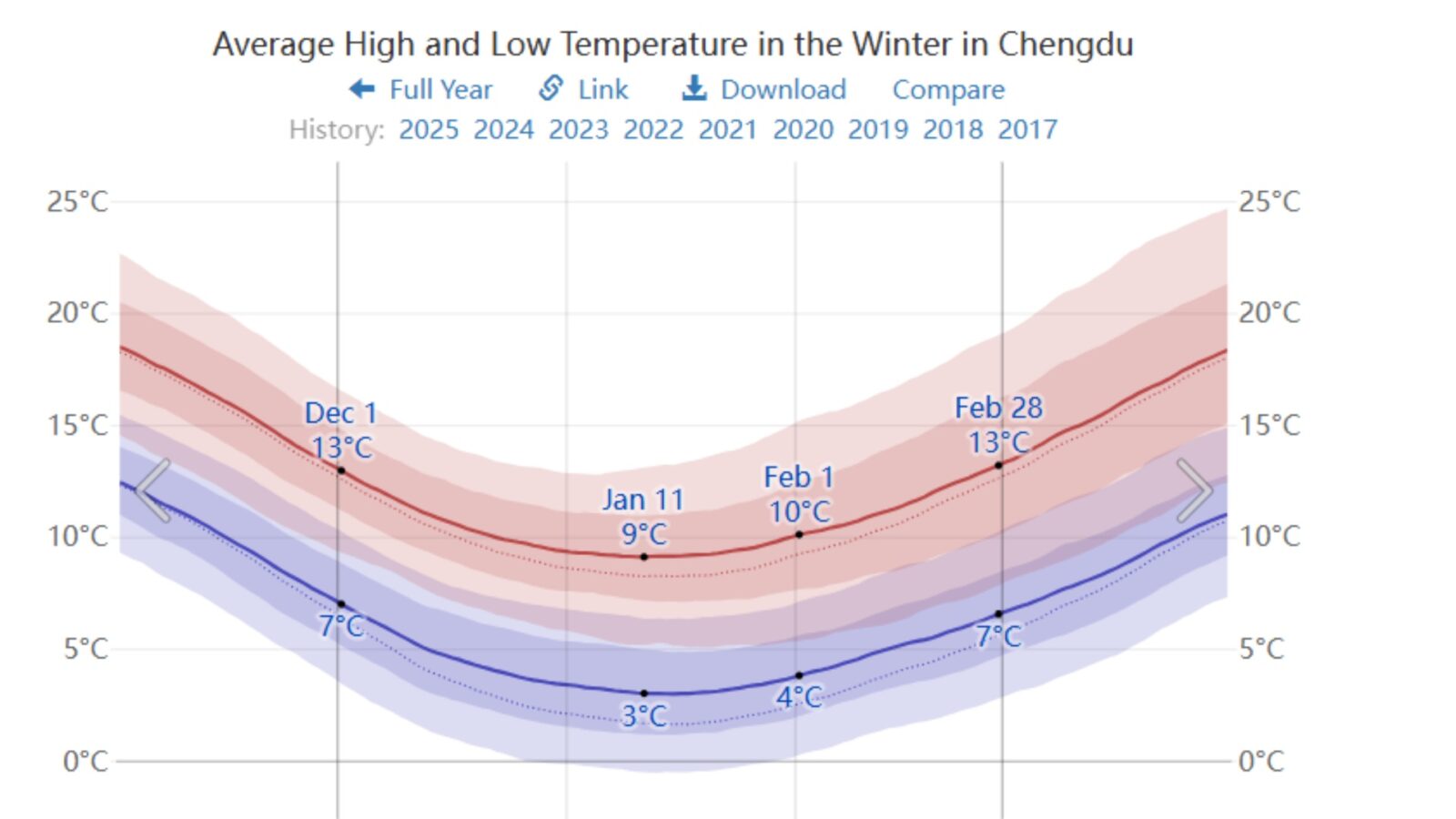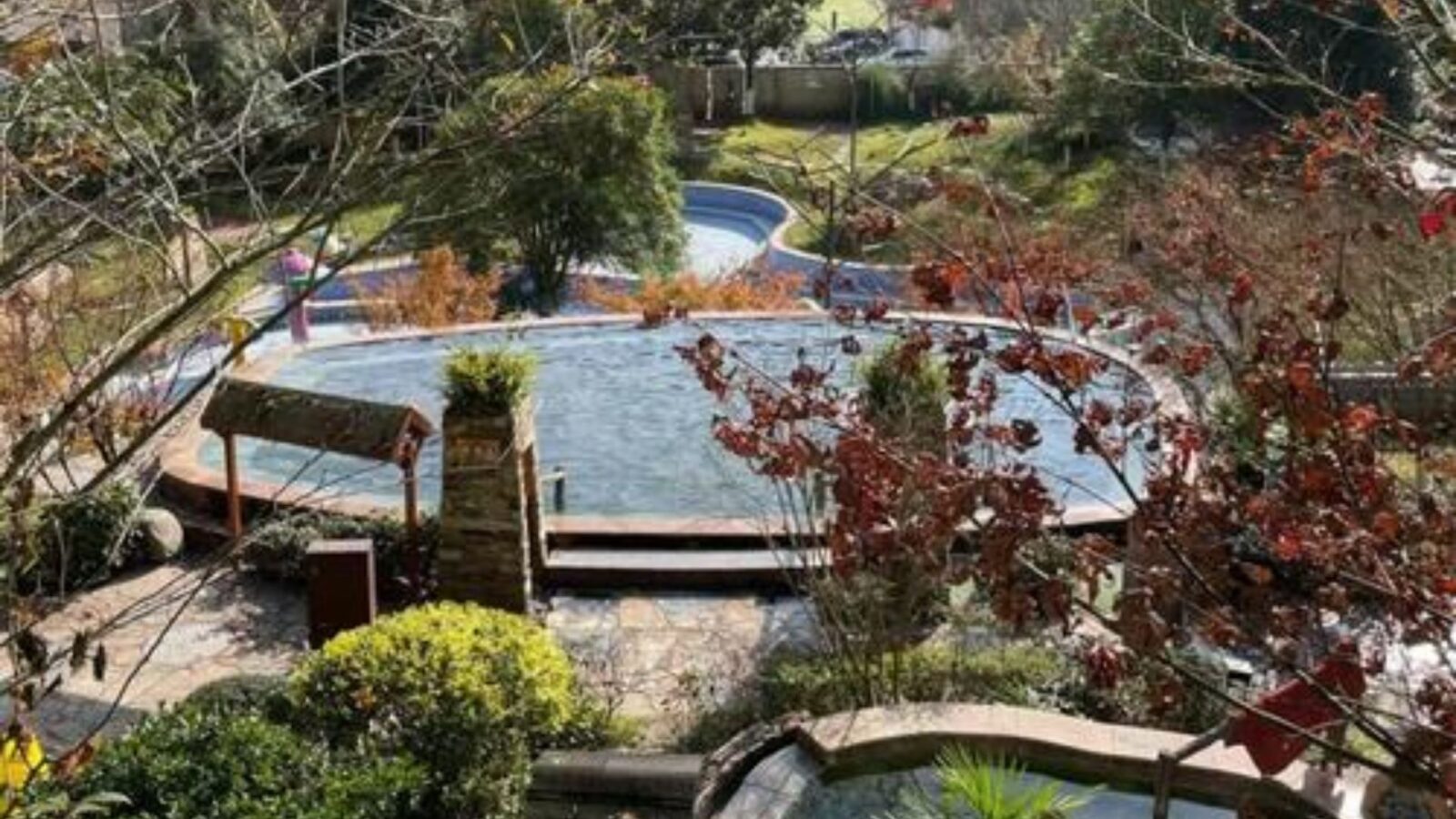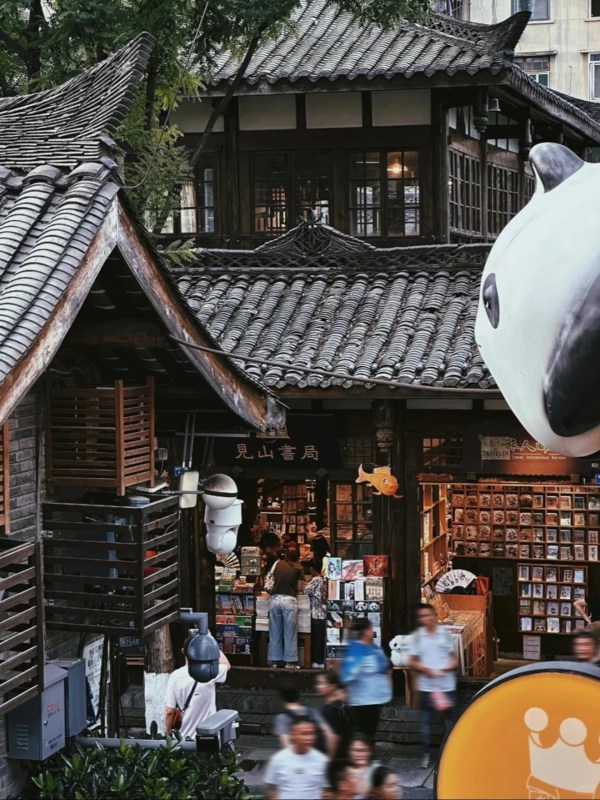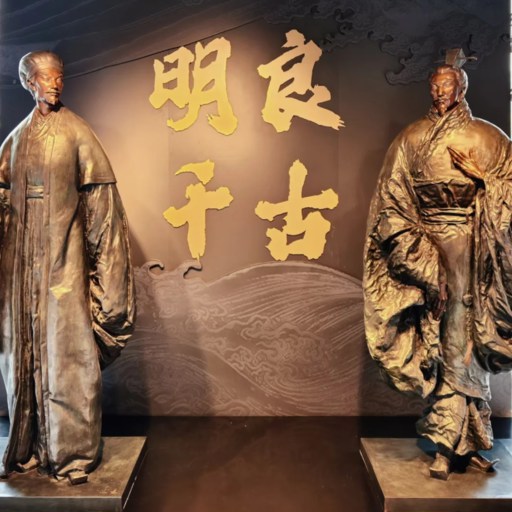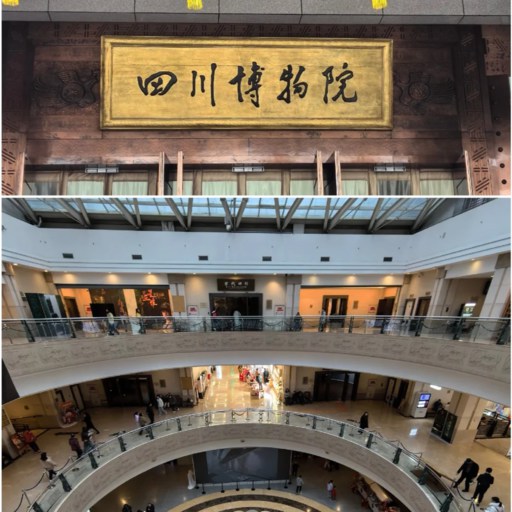Are you eager to see giant pandas in their natural habitat? Or perhaps you're planning a scenic hike in Qingcheng Mountain? Maybe you're a foodie looking to indulge in authentic Sichuan hotpot? The best time to visit Chengdu varies based on your interests. For most travelers, the prime seasons are March to May (spring) and September to November (autumn). During these months, the weather is mild, skies are clear, and conditions are perfect for outdoor exploration, wildlife viewing, and culinary adventures.
Picture yourself sipping tea amidst blooming peach blossoms in spring or strolling under golden ginkgo trees in autumn. Avoid July and August unless you can handle high temperatures and large crowds. So, if you're ready to unlock the secrets of Chengdu and plan an unforgettable trip, start by choosing the perfect time to visit. Dive into our guide to discover more!
Seasonal Breakdown – Best Time to Visit Chengdu by Season
Quick Info of Different Season Temperatures:
| Season | Average Temperature | Travel Vibe | Panda Activity | Recommended For |
|---|---|---|---|---|
| Spring (Mar–May) | 7–27℃ | Blooming & breezy | High | Photographers, couples |
| Summer (Jun–Aug) | 20–35℃ | Humid, vibrant nights | Medium | Families, adventure seekers |
| Autumn (Sep–Nov) | 7–28℃ | Clear, golden | High | Hikers, food lovers |
| Winter (Dec–Feb) | 3–13℃ | Foggy, quiet | Low | Hotpot fans, peace seekers |
Spring (March–May): Blossom & Mild Weather Peak
- Average Temperature of Spring
- Dujiangyan
Spring in Chengdu wakes up slow. The air, ranging from 7 to 27℃, is fresh, and light drizzle makes everything shiny. Locals plan weekend trips to see the flowers; the city feels softer. The Longquan Peach Blossom Valley and the Xinjin Pear Blossom Creek look like rivers with white petals — tiny boats everywhere. Qingbaijiang celebrates the Cherry Blossom Festival, which is not as crowded as Tokyo – only families picnicking around with snacks and bubble tea, politely loud.
Tea houses open their courtyards, the metallic clink of kettles in Wenshu Monastery. Around Dujiangyan, the Water-Releasing Festival signals the first breath of life with the sound of the rituals, incense, and wet soil. You will need a light jacket and an umbrella, but it’s part of Chengdu’s charm – it is never perfect, but it is alive.
Who it’s for: travelers who enjoy slow walks, photos, quiet.
Summer (June–August): Mountain Escape & Night Rain Option
- Average Temperature of Summer
- Qingcheng Mountain
In June, the air becomes heavy, cicadas are loud enough to cover your thoughts. Chengdu becomes as hot as 35℃, and the whole city heads for the hills – literally. Qingcheng Mountain and Xiling Snow Mountain to its southwest are about 5-8℃ cooler; mornings are crispy with pine aroma. If it starts raining, and you are in the forest – the whole thing transforms into a movie scene.
Pandas? They snooze most of the day in the summertime, so you should go early–before 9 a.m. if you’re one of the visitors of Chengdu Giant Panda Base. It’s about ¥58 to get in. When the sun becomes unbearable, the people of Chendu head indoors to the Sichuan Museum or IFS Mall. The giant “Climbing Panda” sculpture clutches off the wall, making it seem like it belongs. Spice your day up entinstance spicy hotpot and a bowl of ice jelly—a favorite seasonal dessert that cools you down quickly.
Who is it for: Families, nightys, people who like the rain.
Want to see more than just pandas? Explore Discover the Best Things to Do in Chengdu: Top Attractions for 2025
Autumn (September–November): Clear Skies & Outdoor Adventure Gem
- Average Temperature of Fall
- Siguniang Mountain
Ask any resident of Chengdu, and they’ll tell you that the city is quite different in the fall. The skies are blue, the air is dry and fresh, and the weather is pleasant, around 7-28℃. ‘locals call’ it’s the “golden term.” Siguniang Mountain, known as the Four Sisters and a popular destination for road traverses, the forests turn oranges and reds.
Jiezi Ancient Town and its stone bridges are a great spot for quiet weekends, hot tea, and leaf rowing. It’s also the time of year to enjoy food. Chestnuts covered in sugar are roasted by street stalls and deliver their smell throughout the entire Jianshe Road Snack Street. There are mandarin oranges, sweet persimmons, and roasted sweet potatoes on sale. The evenings are the best time to dine out.
Who is it for: Hikers, food lovers, anyone looking for the perfect photo.
Winter (December–February): Cozy Food & Hot Spring Hidden Gem
- Average Temperature of Winter
- Dayi Huashuiwan Hot Spring Resort
Winter in Chengdu is gentle—in theory. Although the thermometer may read 3–13 degrees celsius, the constant dampness will make it feel like zero. Everyone wears scarves and heads out for hotpot dinners which will last a few hours. You will see steam rising from every restaurant—it seems as if the city is breathing warmth itself. Locals frequent the Dayi Huashuiwan Hot Spring Resort, which is surrounded by wooded hills and still welcomes guests in a light snow.
Looking for some scenery? Xiling Snow Mountain has skiing for ¥260 a day with ski rentals. If you’d just like to walk around, this city is an actual movie set: Jinli Ancient Street sees red lanterns hanging in misty air, and even if we have cold fingers, we are happy to sit back and relax next to the fire after rain.
This section is perfect for: food, hot spring tourists; people who adore peaceful cities.
When’s the Best Time to Visit Chengdu? Cost-Effective Tips Uncovered!
High-Value Periods
If comfort is to be had while being thrifted, leave November and after Lunar New Year on the calendar — Chinese Spring Festival, late Jan-early Feb 2025 — before February. In November, the air is icy and the tourist is sparse, thus hotel prices plummet 30%-50% compared to the Spring Festival/National Day: that is, one can get a 4-star room that was previously worth ¥800 CNY/night for ¥400-560 CNY/night or around $ 56-78 USD.
Attractions remain available, tourists disappear, and fresh air breathes open. After the crowds disappear even in late February, panda bases become peaceful. The locals are busy at work, and food markets return to normal prices – it’s like a period when Chengdu seems filled with leniency and tranquility.
Peak-Cost Periods
Spring Festival from late January to early February and National Day golden week from 1 to 7 October – get ready for these. Hotel rates rise by 50%-100% and most major sights have established a visit limit. Trains are sold out quickly, and by noon, the hot seating areas of the Kuanzhai alleys are already filled with teahouses.
Whenever planning a journey in the Spring Festival, use the “Chengdu cultural and tourism bureau” official website to book attraction slots seven days beforehand and three days for popular restaurant reservations such as “Chen mapo tofu” via phone – the English dial will dial you via transfer from Tripadvisor. Order at least 1 month in advance and reservation of accommodation and trip reservation in Trip.com or WeChat mini programs to avoid increasing expenditures. Planning here isn’t just useful; it’s an out-and-out fight for the money in your wallet.
Budget-Friendly Offbeat Periods
Mid-December-mid-January’s weekdays are golden days for seekers of silence or low-spending vacationers. Chengdu’s speed drops, the alley is empty, and mist shrouds ancient streets like Jinli and Jiezi only faintly shimmer at night. Hot spring hotels sell weekday tickets at a discount, combining an entrance and dinner. If one enjoys peace and aspiration, this is perhaps the most lenient of Chengdu: slow tea, hot broth and alleys that felt like they belonged solely to you.
Wondering what’s worth your time in Chengdu? Check out Discover the Best Things to Do in Chengdu: Top Attractions for 2025
What Travelers Really Want to Know Before Visiting Chengdu
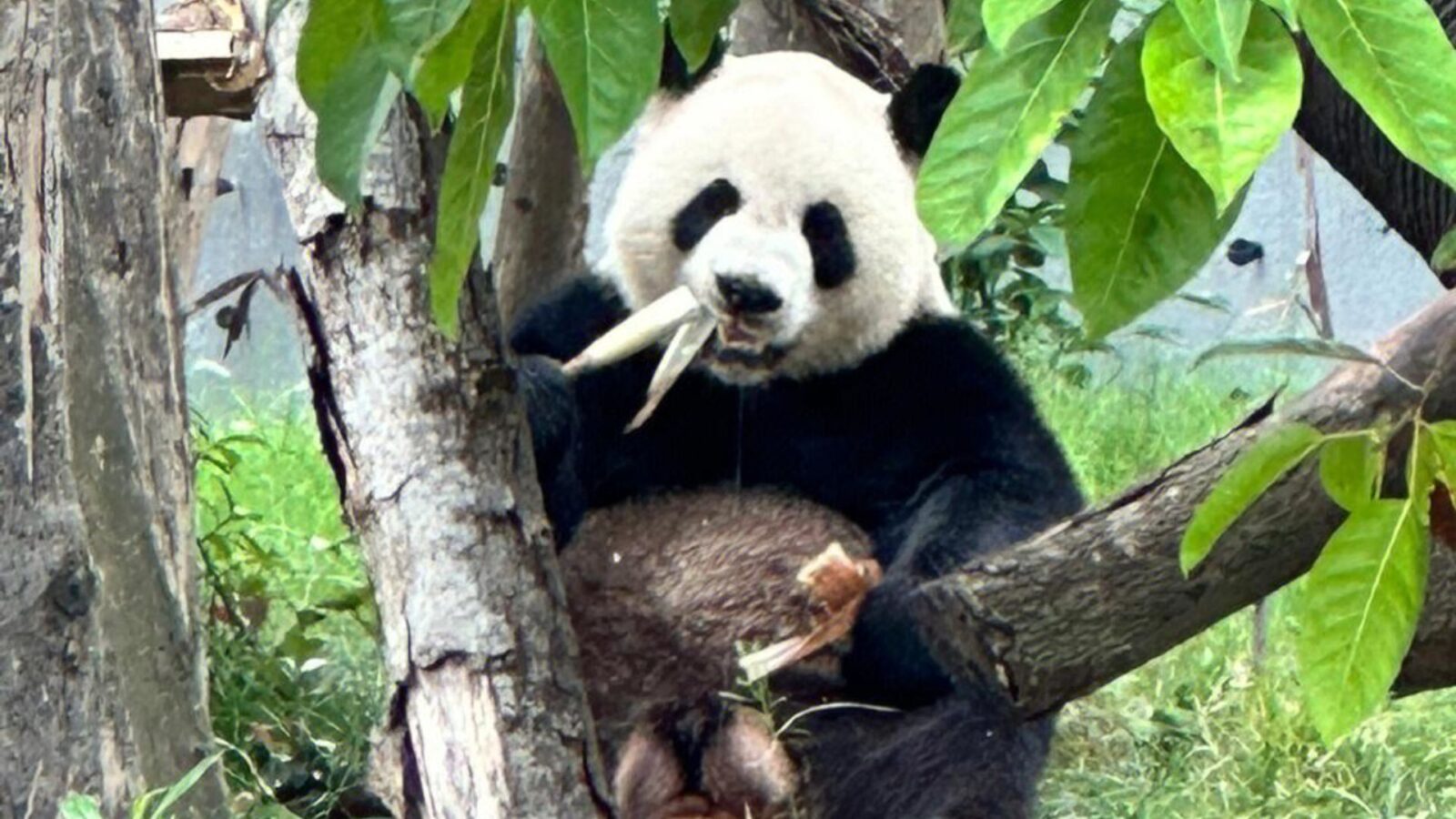
Chengdu Giant Panda Base
When Is the Best Time to See Pandas in Chengdu?
The perfect time for a Chengdu trip is March to May and September to November. Spring is when the new panda cubs out the previous year emerge and play around bamboo shoots. Cool days arrive at the onset of fall, when the pandas are at their most energetic. The opening hours of the Chengdu Panda Base are from 7:30 am, and a ¥58 fee can reserve via Trip.com or WeChat Mini Programs.
The best time to go is before the pandas eat bamboo and roll about life a snowball. Also, these two seasons allow you to avoid the heat of summer and the chill of winter. With excellent weather and panda vitality, explore Chengdu’s charm!
What Is the Coldest Month in Chengdu?
January in Chengdu? You are looking at temperatures around 3℃, but the humidity makes it feel colder than it is, especially when you are indoors without central heating. Bring your down jacket before you head to Taoranju for some jumbo hotpot if you are searching for a hot meal, their beef slices are to die for and melt in the broth. If you really need a hot cup before you leave, the locals favor warm spiced tea. Jinli Ancient Street is a must-visit; the light decorations at this time of year are perfect for time travelers.
However, it would help if you layered, because thermals are a lifesaver, trust me on that one. And visiting the Giant Panda Base is a must! The fauna is still active when it is cold outside. Complete your exploration of the city by downing some fresh sweet osmanthus rice wine.
Is Chengdu Really Worth Visiting?
Yes! Chengdu offers a distinct experience. It is a cultural mecca. The oldest alleyways, Kuanzhai, and Jinli Street are rich with history. Because Chengdu is the panda capital, you must plan a visit to the Research Base. Foodies will be elated. Sichuan is the City of Gastronomy believe it or not, and it offers perfect Sichuan food. You should eat the spicy hot pot or mapo tofu.
Also, the city offers a relaxed environment. On Funan River, watch people do caligraphy, or listen to people playing mahjong in teahouses. All this while the easygoing individuals and relaxed lifestyle there fill your heart with joy.
Itinerary Suggestions Based on Best Time
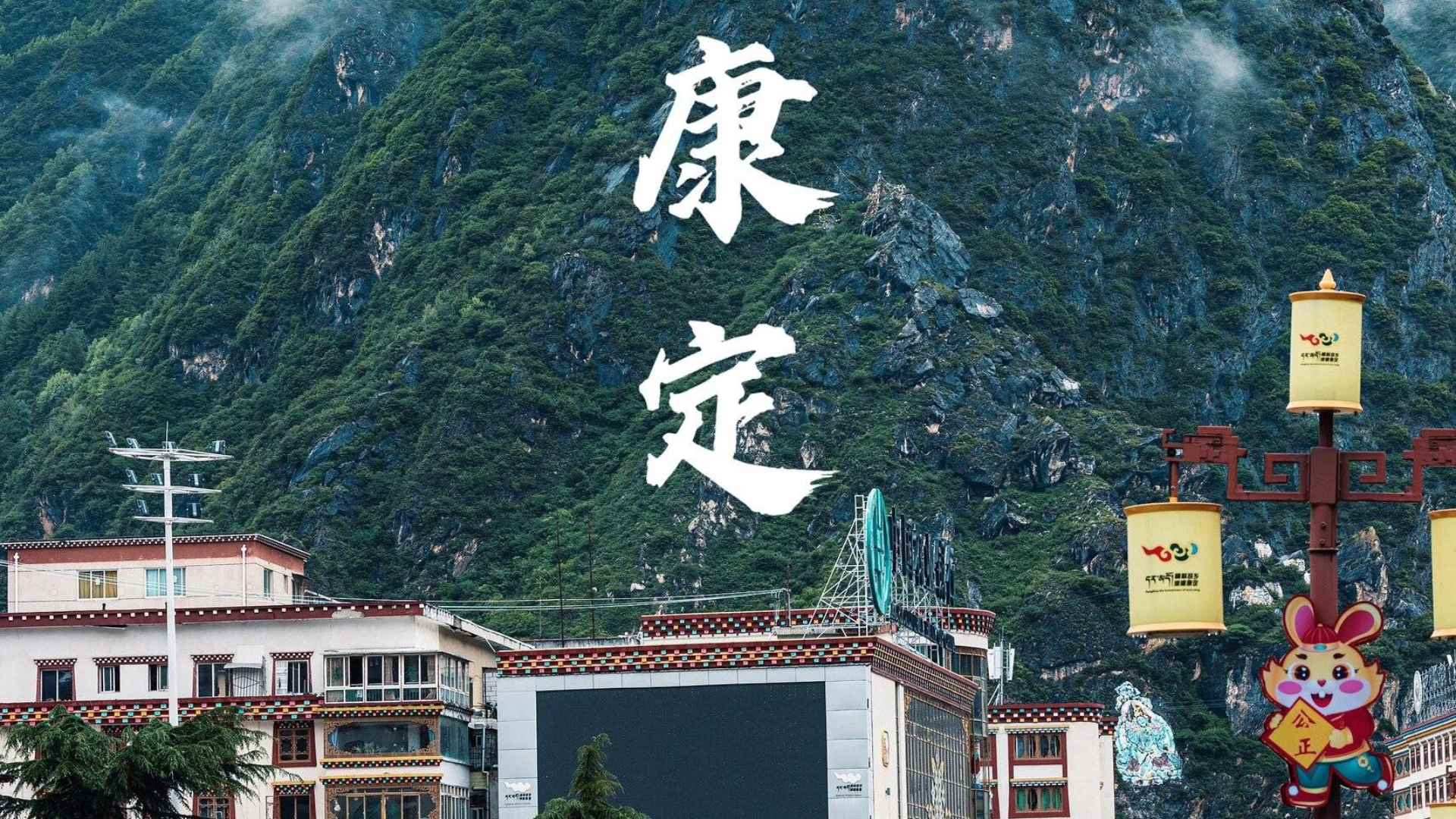
Kangding
1–3 Day Short Trip (All Seasons)
Recommended Route Introduction: your Chengdu journey kicks off with nature, culture, and taste all integrated into one loop. Morning trips to Giant Panda Base are flowless before the environment becomes chaotic. The adjacent Kuanzhai Alleys is a gem for a slow stroll and tea sips. For the end of the day, opt for Dujiangyan for a riverside or Qingcheng Mountain for a forest relaxation. This at least one day ring is your speedy and fully packed wrap-up option.
Summer Intinerary Proposal: The day starts at Sichuan Museum, where you inhale slightly cooled air with the history at the same time. IFS Mall is a good place for a rapid lunch and additional shopping. Drive to Xiling Snow Mountain where at least you do not burn. A sunset walk is preferable before returning. This is a balanced trip for cultural learning and pure fun in the lap of nature.
Winter Intinerary Proposal: The 1 st day starts at Chunxi Road, where a feeling of shopping vs. snacking excitement is inseparable. For dinner, kickstart a hotpot adventure – even chilly weather does not scare it. The Huashuiwan Hot Spring is a two-hour ride from the destination. A perfect recharging and contemplating spot for everyone. Such a system creates a smooth transition between the spots, and each one feels like a bright oasis.
4–7 Day Deep Trip (Best in Autumn)
Schedule a week off and slow down along the route Chengdu to Dujiangyan to Siguniang Mountain to Danba to Kangding. Begin your journey in Chengdu and then move on to Dujiangyan to see the oldest engineering facilities in the world and take a stroll along the tranquil riverside. Afterward, go to Siguniang Mountain, where you will find clouds embracing giant peaks and grazing horses.
Your next stop should be Danba; you’ll be fascinated by the Tibetan villages, colored houses, barrows, and open-air markets. Finally, Kangding is a small town with the sky is as deep blue as the prayer flags. The journey’s highest point is 4,000 meters, so slow down, drink tea, and stay at inn at scenic along the route. Each of the intermediate points can tell you a tale worth slowing down to hear it.
Reference budget for 7 days Western Sichuan Small Loop: around ¥3,000 per person including accommodation, tickets, and food. The most expensive activities include “the ticket to Siguniang Mountain (¥150 ) and “accommodation in Danba Tibetan Village (¥120 /night )” – you can save up to 15% if booking 2 weeks prior.
Practical Travel Tips for Chengdu: Aligned with Best Visiting Times
Seasonal Gear & Timing Hacks for Key Spots
For spring blossom trips, pack a light waterproof jacket and small camera bag. Leave for Longquan Peach Blossom Valley by 9 a.m. to avoid midday tour groups. In summer, carry a portable fan and small towel for urban walks. Head to Qingcheng Mountain before 8 a.m. to beat the 10 a.m. heat wave. Autumn hiking needs a thin fleece—Siguniang Mountain gets cool after 4 p.m. Bring a reusable bag for sugar-fried chestnuts from Jianshe Road. Winter requires waterproof boots and a warm scarf; visit Dayi Huashuiwan Hot Spring after 2 p.m. to skip morning crowds. Always check the next day’s forecast the night before—sudden rain often changes plans.
Local Food Ordering & Budget-Saving Tricks
When eating hotpot in winter, ask for “laoying cha” to cut greasiness—it’s free. For summer snacks, choose “bing fen” with brown sugar instead of sweetened condensed milk. Save money by visiting food markets like Taiping Market on weekends. Street vendors there sell fresh toona shoots cheaper than restaurants. Use “Chengdu Food Guide” app to find hidden local spots—many have unlisted deals. Order “xiaocai” (side dishes) to share; they cost ¥5–10 and fill you up fast. Avoid tourist-focused restaurants near Jinli—walk two blocks away for better prices and taste. Always carry ¥10–20 cash for small street stalls that don’t take phones.
Transport Shortcuts & Language Help for Travel
For panda base trips, take Metro Line 3 to Panda Avenue Station, then the ¥2 shuttle. It’s faster than taxis and avoids traffic jams. When going to Dujiangyan, buy high-speed train tickets via Trip.com’s English version. Pick them up at Chengdu East Station’s foreigner service window. Use “Didi Chuxing” app’s English mode for late-night rides—set your hotel as the destination first. Save “Chengdu Metro Map” offline on your phone; stations have free Wi-Fi but signal can be weak. If lost, find AI translation screens in Chunxi Road—they help with directions and phrases. Carry a small card with your hotel’s address in Chinese; show it to taxi drivers when you can’t speak.
FAQ: Additional Notes on the Best Time to Visit Chengdu
Q: What’s the cheapest month to visit Chengdu?
November and February after Lunar New Year offer big savings. Hotels drop prices by 30–50%, and crowds thin out fast. You can walk through alleys without queues and get better photos. The best time to visit Chengdu for budget travelers is clearly these calm months. During these periods, even local restaurants launch seasonal discounts and limited dishes.
Q: How early should I book hotels for Chinese holidays?
During Spring Festival and National Day, rooms disappear quickly. Prices may double, so book at least one month ahead. Early booking saves money and gives more choices. Many locals agree that the best time to visit Chengdu is before these busy holidays. Try booking through Ctrip or Trip.com to see verified guest reviews in English.
Q: Are attractions open in winter?
Most major spots stay open, like Jinli Street and Dujiangyan. The city feels quiet, and air smells crisp after light rain. Fewer people make each stroll relaxing and warm. For peaceful sightseeing, winter is often the best time to visit Chengdu. Some temples even host winter festivals with lanterns and tea tastings.
Q: What’s a realistic daily budget for Chengdu?
Plan around ¥500–¥700 per day for food, transport, and mid-range hotels. Street snacks cost little, but hotpot dinners add up quickly. If you balance meals and rides well, you’ll stretch your cash easily. The best time to visit Chengdu for value seekers matches low-season discounts. You can also save by using metro day passes or shared e-bikes.
Q: Is it worth visiting during the rainy season?
Rain adds charm to Qingcheng Mountain and city teahouses. Locals sip tea as raindrops tap on bamboo roofs. Waterproof shoes and patience are your best friends then. Many believe the best time to visit Chengdu is when the rain paints everything green. Carry a light poncho and enjoy misty selfies at Wuhou Shrine.
Q: Can I use foreign credit cards in Chengdu?
Yes, through Alipay Tour Card and WeChat Pay for Foreigners. Visa and MasterCard now work easily across shops and metros. It’s simple once you scan a QR code. For convenience lovers, any season feels like the best time to visit Chengdu. Still, carry small cash for small markets or street stalls.
Q: What’s the most scenic day trip from Chengdu?
Take the high-speed train to Leshan Giant Buddha. The ride takes two hours, and the river view shines at sunrise. Try local snacks nearby before heading back. Many travelers say this trip defines the best time to visit Chengdu’s surroundings. You can also combine it with Emei Mountain for a full-day spiritual escape.
Q: Where can I relax like locals on a low budget?
Head to People’s Park and sit at a teahouse under old trees. A pot of jasmine tea costs only ¥20, and conversation flows easily. It’s a place to slow down and people-watch. For authentic calm, mornings here mark the best time to visit Chengdu. Bring your own snacks to blend in with locals who stay for hours.
Q: Are there any local passes or combo tickets?
Yes, Ctrip and WeChat offer bundles for panda base and museums. Discounts reach 20%, saving both money and time. Compare options online before buying tickets. Smart travelers know that checking deals first defines the best time to visit Chengdu. Some deals also include free metro rides to connected attractions.
Q: How safe are Chengdu’s night markets and streets?
Very safe, with locals dining late and music echoing from alleys. Stay alert for pickpockets, like anywhere else. Police patrols keep main areas friendly and bright. Nighttime strolls around Chunxi Road often feel like the best time to visit Chengdu. Try sampling grilled squid or sugar art while you explore at night.
